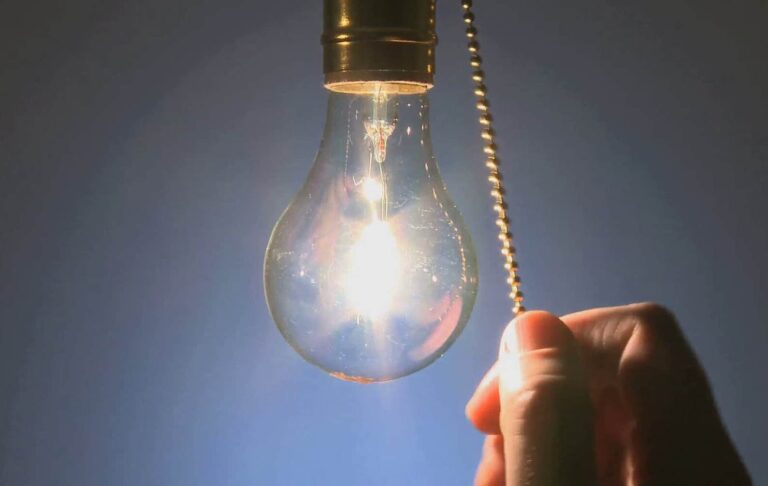
How to Protect Your Appliances After a Blackout: Electrician’s Advice and Practical Solutions
In Ukraine, after every large-scale blackout or even a local power outage, most people are relieved when the lights turn on again in their homes. However, it is precisely in this moment in the first minutes after electricity is restored that home appliances are at the highest risk.
The main reason is simple and harsh: sudden voltage surges. The power grid is heavily loaded when hundreds or thousands of devices turn on almost simultaneously. The system does not have time to stabilize, and instead of a steady 220 V in the sockets, the voltage can swing between 180 and 280 V.
For modern electronics, this is real stress. Televisions, refrigerators, boilers, computers all of them can be damaged by just one brief power surge. Such incidents are not rare. Energy specialists warn directly: during emergency power restoration, the voltage may often exceed the norm by one and a half to two times.
This is not an exception but a typical situation for Ukraine’s war-damaged energy system.
Why Dangerous Voltage Surges Happen
1. The grid is overloaded in the first minutes after restoration.
When dozens of appliances in one building or entrance start drawing power at the same time, the system cannot instantly stabilize the voltage.
2. Worn-out grounding or old wiring.
In buildings with outdated electrical systems, the problem only gets worse. Faulty or missing grounding increases the risk for all electronics in the apartment.
3. Consequences of damage and emergency repairs.
Shelling, emergency repairs, and old infrastructure have led to regular voltage fluctuations even in big cities. As of 2024–2025, experts recognize voltage surges as a systemic problem for Ukraine.
How Voltage Surges Damage Appliances
For most modern electronics, even a short-term voltage outside the 207–253 V range (these limits are set by the European standard for 230 V) is critical. Exceeding these limits is the main cause of breakdowns.
Low voltage puts extra load on, for example, the compressor of a refrigerator or washing machine motors. This shortens their lifespan or destroys components completely.
Overvoltage often instantly “kills” the power supply of TVs, routers, or computers. Microchips burn out, boards are destroyed.
Practical Recommendations for Real Protection
In an environment where voltage surges have become a daily reality for Ukrainians, it is important not just to wait for the system to stabilize but to act following a proven algorithm.
1. Always unplug large appliances before a blackout.
If there is a planned outage, unplug the refrigerator, washing machine, TV, computer, router before power returns.
When the power comes back, do not rush to turn everything on at once. Give the network at least 10–15 minutes to stabilize. This reduces the chance of damage from a voltage surge.
2. Use voltage control relays and stabilizers.
A voltage control relay (an automatic breaker that disconnects the circuit when the voltage goes beyond safe limits) is the simplest way to avoid losing expensive appliances.
A voltage stabilizer keeps the voltage steady even when there are swings in the network. Choose a device with a power reserve, and connect especially sensitive equipment (fridge, TV, computer) through the stabilizer.
For computers, internet, and alarms the optimal solution is a UPS (uninterruptible power supply), which allows you to safely shut down devices during emergencies.
3. Do not turn on all appliances immediately after the power returns.
Distribute the load: first, basic lighting, then the refrigerator and essentials, then turn on other powerful devices with a few minutes’ delay.
4. Check the state of your wiring and grounding.
In older buildings, wiring is often worn out, and grounding is missing or faulty. It is worth inspecting the panel and, if needed, inviting an electrician to audit and replace protective devices.
5. If using a generator or power station connect sensitive equipment only through a stabilizer or UPS.
Do not connect expensive devices directly this sharply increases the risk of short circuits and appliance failure.
6. Do a seasonal check of your electrical panel and devices.
Before winter or during peak load seasons, check the status of automatic circuit breakers, protective devices, and test voltage with a multimeter at different hours.
Why This Problem Is Especially Acute in Ukraine
In the context of heavy shelling, accidents, worn-out networks, and a large number of old infrastructures, the level of protection against voltage surges remains low.
Energy professionals emphasize: “The best protection for household appliances is to de-energize the apartment… at the moment of turning off or on, a voltage surge occurs.”
Modern appliances with electronic boards are more vulnerable than old Soviet models. In the absence of official national statistics on appliance failures, the problem remains “invisible” but massive hundreds of complaints are registered by power companies every week.
What To Do To Save Your Appliances
The problem of voltage surges after blackouts is systemic for Ukraine in 2024–2025. No appliance is insured against damage if you neglect simple but effective rules:
- Always unplug expensive devices before a power outage and do not rush to turn them on immediately after restoration.
- Install voltage control relays on the main lines, especially in older homes.
- Invest in voltage stabilizers for equipment that costs more than the protection itself.
- For computers and connectivity only use a UPS or a combination with a stabilizer.
- Regularly check your electrical system, wiring, and grounding.
The main thing: the habit of unplugging equipment and using protection devices is not just a precaution, but a daily safety routine.
In the context of an energy crisis during wartime, the cost of these actions is much less than the potential losses.
Your attention and simple steps today are the reason your appliances will work for years, even after dozens of blackouts.












